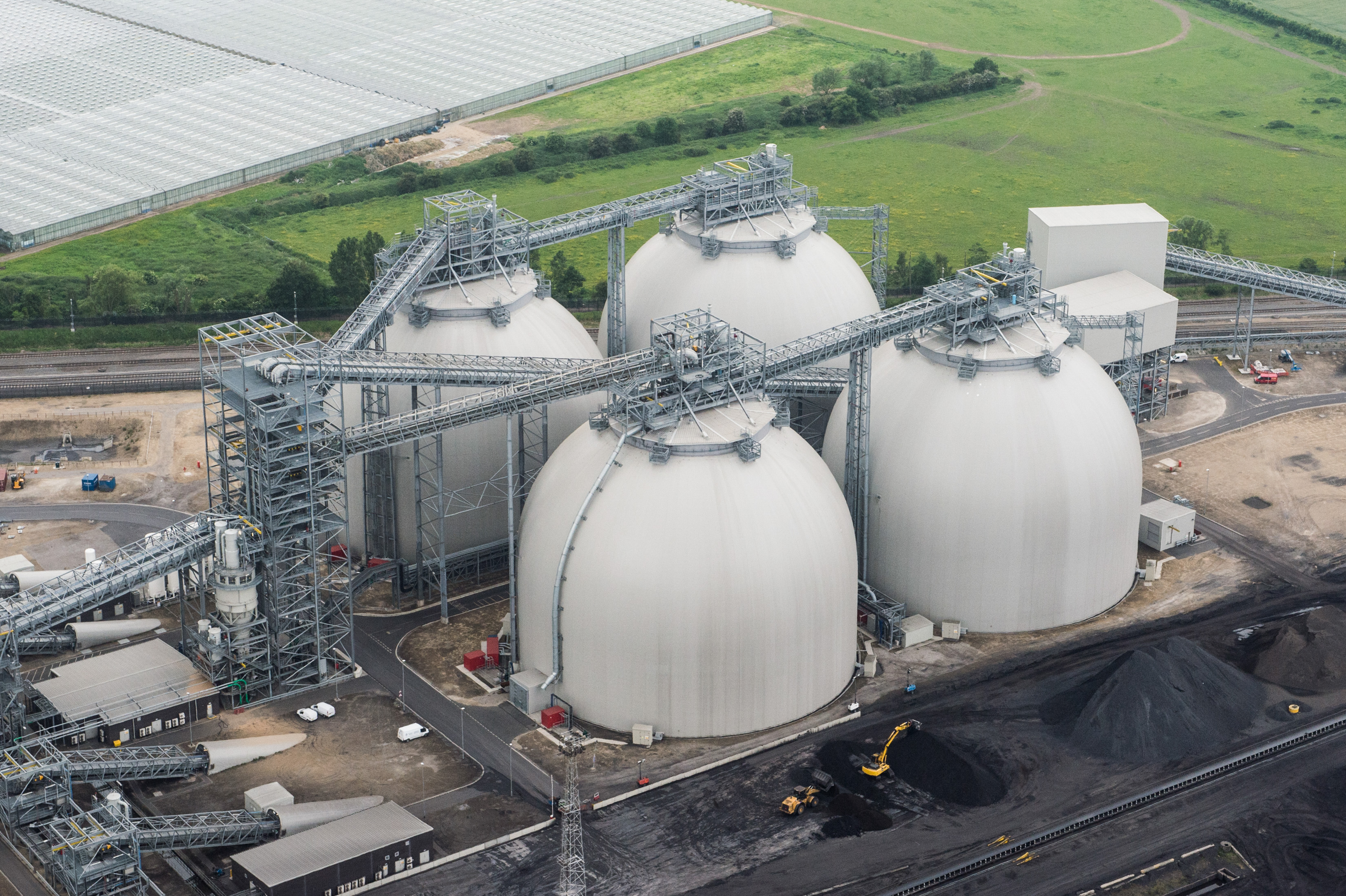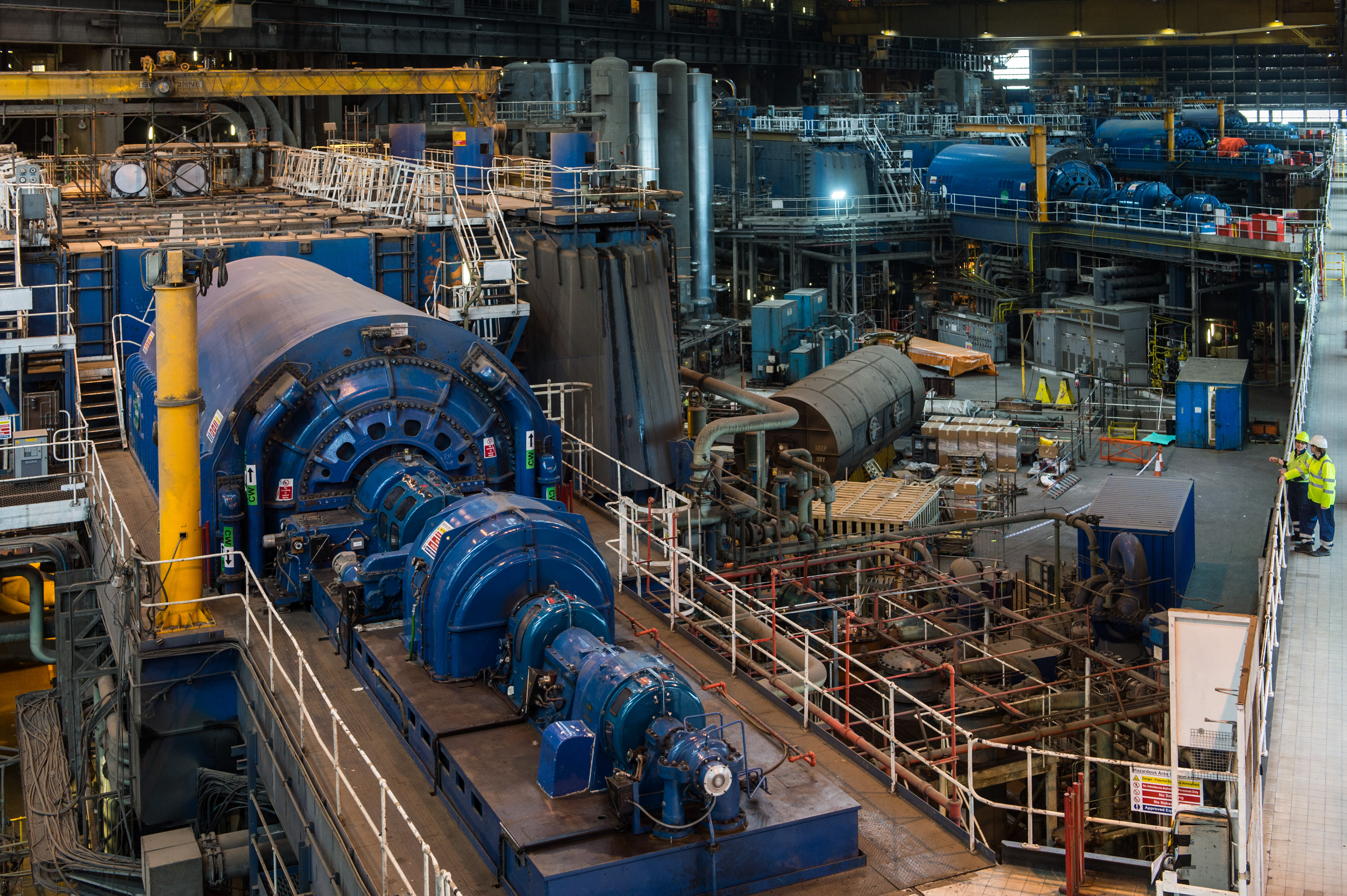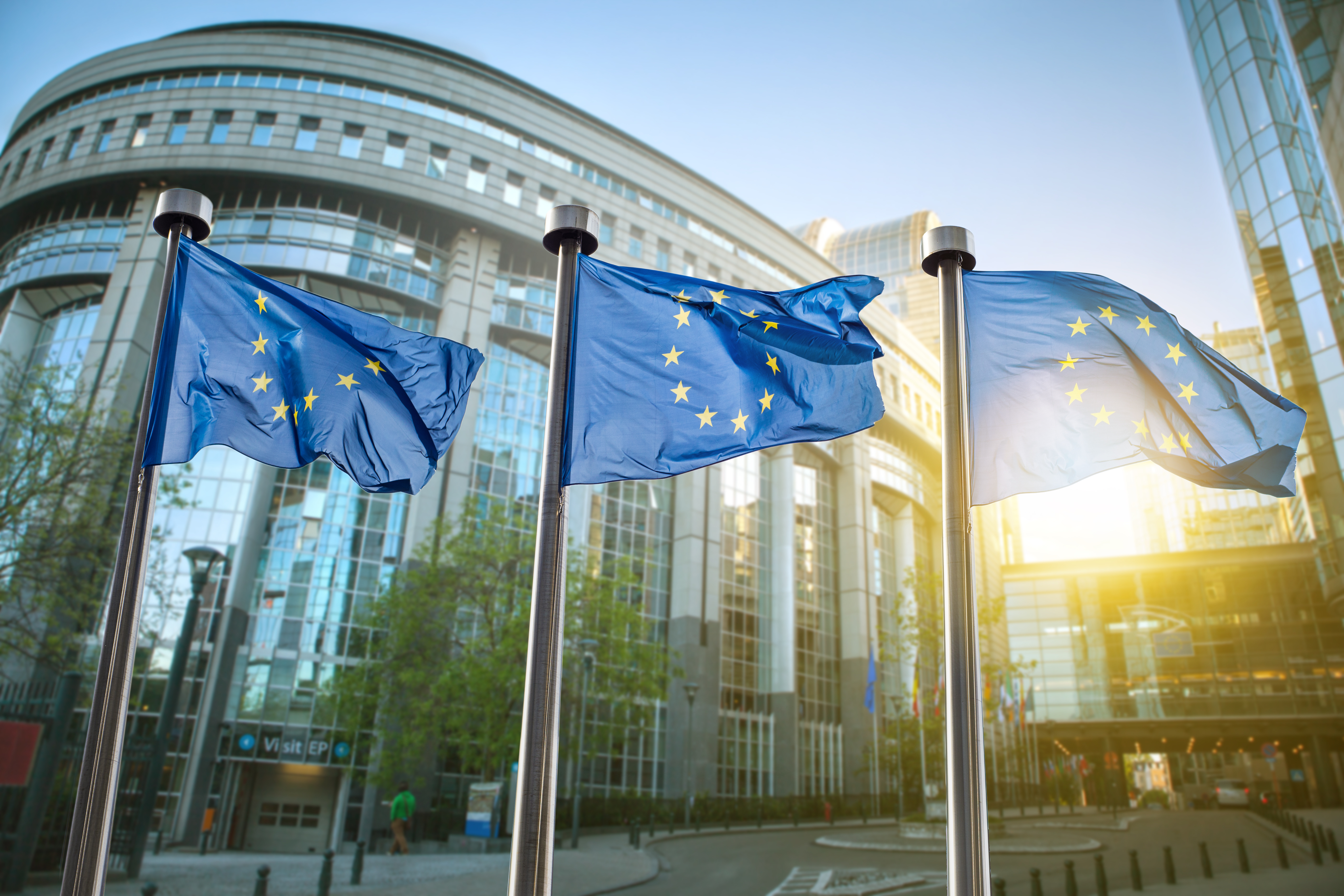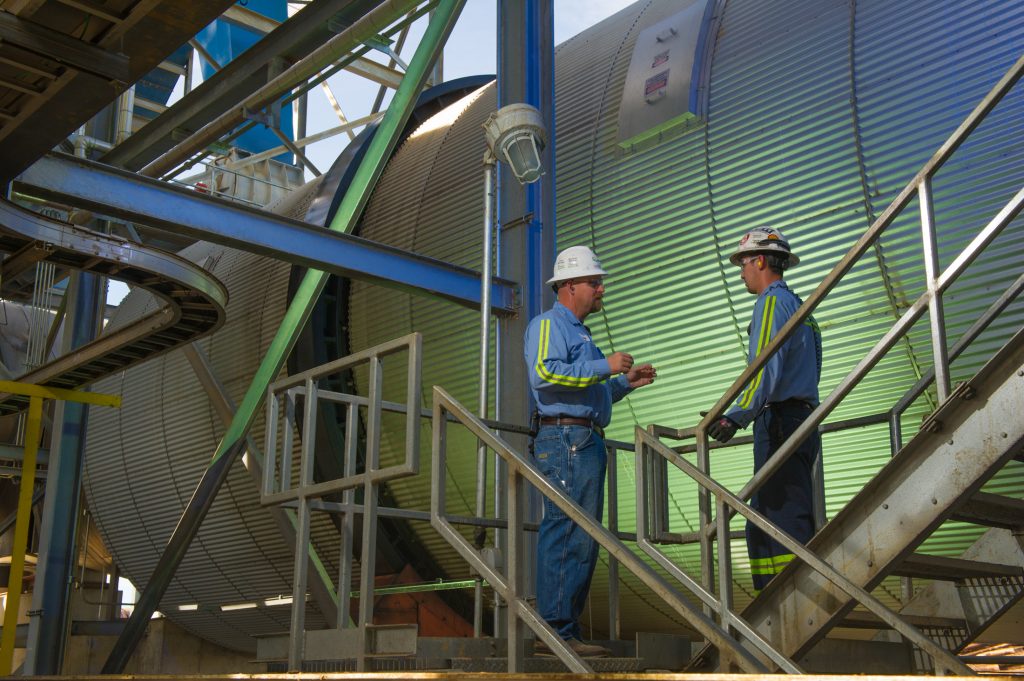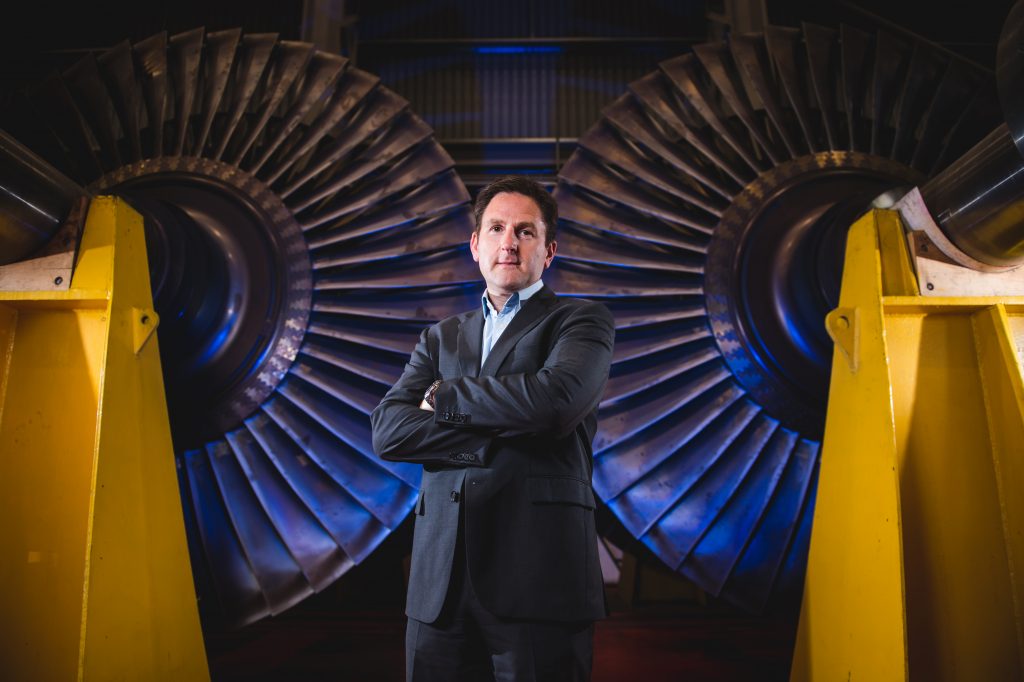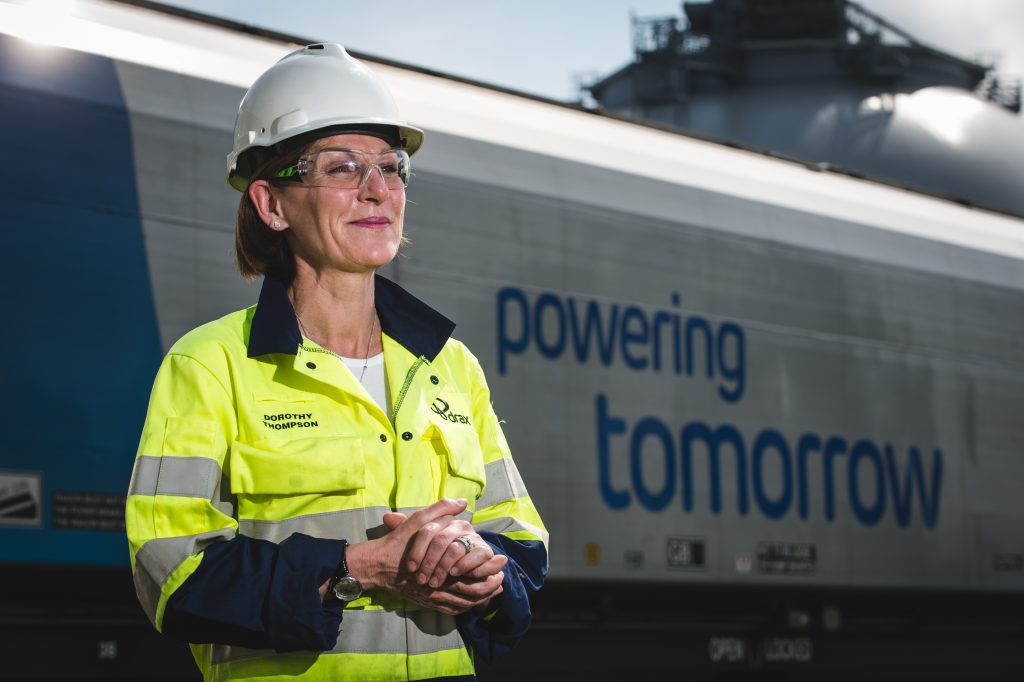Today Drax publishes details of the proposed acquisition of Opus Energy Group Limited (“Opus Energy”) and the acquisition of four Open Cycle Gas Turbine (“OCGT”) development projects(1) along with a strategy and current trading update for the period from 1 July 2016 to date.
Strategy Update
As outlined in its half year results, Drax has been exploring options to further improve earnings quality and deliver targeted long-term growth, evaluating opportunities to diversify across the markets in which it operates – pellet supply, generation and retail.
As part of this ongoing process, Drax is today announcing that it has entered into a conditional agreement to acquire Opus Energy and an agreement to acquire four OCGT development projects for electricity generation. Drax is also continuing to monitor opportunities to acquire further wood pellet plants.
The acquisition of Opus Energy will be subject to the approval of the CfD(2) by the European Commission and Drax remains confident of approval of this contract.
Today’s announcement marks a significant milestone in the execution of Drax’s strategy, helping it to change the way energy is generated, supplied and used for a better future.
Opus Energy
- Proposed acquisition of Opus Energy for £340 million(3)
- A well established and proven retail business serving the SME market
- Compelling range of strategic and financial benefits including
- Acceleration of retail strategy
- Advances transition to diversified, higher quality long-term earnings
- Attractive financial returns
- Return on invested capital greater than cost of capital
- Significantly accretive to earnings, with strong cash flow generation in 2017
- Fully debt funded through new facility, with robust sub-investment grade business model
- Class 1 transaction subject to shareholder approval and approval of CfD by the European Commission(2)
OCGT developments
- A response to changing energy requirements
- Acquisition of four OCGT projects with a total capacity of c. 1,200MW for initial purchase price of £18.5 million, with final consideration dependent on clearing price in capacity market auctions (4)
- Two sites in 2016 capacity auction
- Diversification of Drax generation mix
Trading
- Drax continues to expect full year EBITDA(5) to be around the bottom of the range of current market forecasts (6)
Commenting on today’s announcement, Dorothy Thompson, Chief Executive Officer of Drax Group, said:
“Drax is already playing a vital role in helping change the way energy is generated, supplied and used as the UK moves to a low carbon future.
Today we are pleased to announce the proposed acquisition of Opus Energy, the UK’s leading challenger retail supplier in the SME market, creating a strong and competitive presence complementing our existing Haven Power offer.
We are pleased that five of our leading shareholders representing over 45% of the issued share capital have indicated that they will support the transaction, and we thank them for their support.
We are also announcing the acquisition of four OCGT development projects, which will play an important role in helping government meet their ambition of new gas generation, reducing carbon emissions, forcing more coal off the system, providing additional system support to ‘plug the gaps’ created by intermittent renewables and boosting security of supply.
With the right conditions, we can do even more, converting further units at Drax to use sustainable biomass in place of coal. This is the fastest and most reliable way to support the UK’s decarbonisation targets, whilst minimising the cost to households and businesses.
These initiatives mark an important step in delivering our strategy, contributing to stronger, more predictable, long-term, financial performance, through greater diversification of the businesses, delivering more opportunities right across the markets in which we operate.”
Enquiries:
Drax Investor Relations
+44 (0) 1757 612 491
Mark Strafford
J.P. Morgan Cazenove (acting as exclusive financial adviser to Drax Group plc in connection with the proposed acquisition of Opus Energy):
+44 (0) 207 742 6000
Robert Constant
Carsten Woehrn
Wendy Hohmann
Drax Media
+44 (0) 1757 612 026
Paul Hodgson
Website: www.Drax.com
J.P. Morgan Limited (which conducts its UK investment banking activities as J.P. Morgan Cazenove), which is authorised and regulated in the United Kingdom by the Financial Conduct Authority, is acting exclusively for Drax Group plc and for no one else in connection with the proposed acquisition and will not regard any other person (whether or not a recipient of this document) as a client in relation to the proposed acquisition and will not be responsible to anyone other than Drax Group plc for providing the protections afforded to customers of J.P. Morgan Cazenove or for affording advice in relation to the proposed acquisition, the contents of this document or any transaction, arrangement or other matter referred to in this document.
Analyst call and webcast arrangements
Management will host a presentation for analysts and investors at 9:30am (UK time), Tuesday 6 December 2016, at The Lincoln Centre, 18 Lincoln’s Inn Fields, London, WC2A 3ED.
Would anyone wishing to attend please confirm by either emailing epayne@brunswickgroup.com or calling Emma Payne at Brunswick Group on +44 (0) 207 3963556.
The meeting can also be accessed remotely via a conference call or alternatively via a live webcast, as detailed below. After the meeting, a video webcast and recordings of the call will be made available and access details for these recordings are also set out below.
A copy of the presentation will be made available from 7am (UK time) on Tuesday 6 December 2016 for download at: www.drax.com>>investors>>results_and_reports>>IR presentations>>2016 or use the link https://www.drax.com/investors/results-and-reports/#investor-relations-presentations
Opus Energy
Drax Developments Limited, a member of the Drax group, has entered into a binding conditional agreement with the shareholders of Opus Energy (the “Sellers”) for the purchase of Opus Energy for £340 million, payable in cash on completion(3).
Completion of the acquisition is conditional on, amongst other things, the approval of Drax’s shareholders and the approval by the European Commission of the CfD Investment Contract(2) awarded to Drax by the UK government. Drax remains confident of approval of the CfD Investment Contract.
A circular is expected to be sent to shareholders in early 2017 convening a general meeting to vote on the acquisition. Completion of the acquisition is also expected to occur in early 2017.
Background to and reasons for the proposed acquisition
The Drax board of directors believes that the proposed acquisition provides a unique opportunity and is strategically and financially compelling. Opus Energy will enhance Drax’s retail offering by combining the leading “challenger” small and medium enterprise (“SME”) business with Haven Power’s strength in the industrial and commercial (“I&C”) market. The combination provides a robust platform for growth, combining Drax’s and Haven Power’s commercial capabilities and vertically integrated business model with Opus Energy’s established SME business and experience in both electricity and gas. The acquisition leverages Drax’s flexible, reliable, renewable generation offering to create energy solutions for customers. It also furthers Drax’s strategic ambition to diversify and improve the quality of its earnings whilst increasing the contribution of businesses with long-term growth opportunities.
Key benefits of the acquisition
Acceleration of Drax’s retail strategy
The acquisition provides access to a large and profitable SME focused retail business. As the leading “challenger” brand in the SME market, Opus Energy has demonstrated consistent sales and sustained growth in revenue and profitability(7) driven by customer satisfaction and high customer retention levels (>85% April 2015 to June 2016). As at 31 March 2016, Opus Energy had a total of 129,025 customers (with 265,418 meters), and as at 30 April 2016 had a non-domestic electricity market share of 8% (by meters count).
Opus Energy’s experience and proven success in the SME market, combined with Haven Power’s existing presence in the I&C market, represents an exceptional opportunity for Drax to develop a platform for the growth of its retail business and significantly expand its customer base in the profitable SME sector, accelerating the implementation of Drax’s retail growth strategy.
Platform for growth
Over the last six years, Opus Energy has trebled the number of meters contracted to 265,418 (as at 31 March 2016) and has driven profitability, through its low cost business model and strong customer service proposition. The acquisition provides the combined Drax and Opus Energy groups (the “Enlarged Group”) with established routes to market for electricity and gas in the SME market and Drax believes that the combination of Opus Energy and Haven Power can drive market share growth. The SME market covers a broad range of customers – at the large end commercial users, similar to I&C customers, whilst at the smaller end, users similar to domestic customers. The expertise and platforms shared by the combined business across both I&C and SME markets will enable the Enlarged Group to deliver new products and services and enhanced market coverage.
Compatible and complementary to existing retail business
Haven Power was acquired by Drax in 2009 as a credit efficient route to market for the large volumes of electricity produced by Drax Power and to monetise electricity sales and renewable certificates, such as Renewables Obligation Certificates (“ROCs”). Haven Power has focused on growing market share in the I&C market and currently has limited presence in the SME market, where Opus is well established.
The acquisition, therefore, complements Haven Power with its focus on a profitable separate and distinct customer segment. It will also enlarge the route to market for Drax’s generation business and allow its retail business to achieve critical mass both in the non-domestic market and within the Drax group. Opus Energy’s expertise in SME electricity and gas sales, combined with Haven Power’s track record in the I&C market and Drax’s umbrella of generation-backed power and commodity risk management, is anticipated to provide distinct benefits in the future, including the opportunity for an alternative hedge to commodity market exposure.
Drax believes that Opus Energy’s expertise in different but related markets, a challenger mentality and a shared customer service ethos with Haven Power, together with its strong credit and risk management, including commodity risk, makes Opus Energy a good cultural fit with Drax and contributes to the uniqueness of the acquisition opportunity.
|
Haven YE Dec 2015
|
Opus YE Mar 2016
|
Proforma
|
|
Revenues (£m)
|
1,290
|
573
|
1,863
|
|
Gross Profit (£m)
|
19
|
107
|
126
|
|
Gross profit margin
|
1%
|
19%
|
|
|
|
|
|
|
Customer Meters (000’s)
|
30
|
265
|
295
|
|
Power (TWh)
|
13.8
|
4
|
17.8
|
|
Gas (TWh)
|
–
|
1.7
|
1.7
|
|
|
|
|
|
Staff
|
c.400
|
c.870
|
c.1,270
|
Advances transition to broader, higher quality long-term earnings
Drax’s current strategy is to enhance quality of earnings and manage its exposure to commodity and power markets by broadening the range of markets in which it operates with improvements in magnitude and stability of net income.
The acquisition aligns with this strategy and is expected to deliver more broadly based, high quality and predictable earnings, today and in the long-term. This will be driven by more revenue from electricity and gas sales in the SME market and Opus Energy’s high levels of customer retention (>85% in April 2015 to June 2016).
Attractive financial returns
Opus Energy is expected to deliver strongly enhanced margins to Drax’s retail business having experienced consistent mid-single digit EBIT margins over the last three financial years. Opus Energy is focussed on small SME and multi-site corporate groups obtained via an extensive network of third party intermediaries (“TPIs”) and is supported by a specialist customer service department. The utilisation of TPIs has helped to increase Opus Energy’s customer base and has established a broad sales network incentivised to maximise margin. Together with a simplified pricing model and quick customer revenue collection, Opus Energy delivers significantly higher net margins per customer than those currently achieved by Haven Power in the higher volume, low margin I&C sector. In addition, over the last three financial years, the difference between Opus Energy’s EBIT and EBITDA has remained consistently low reflecting the low capital intensity of its business.
The acquisition is expected to add both short and long-term financial benefits to Drax. Drax expects to achieve a return on invested capital higher than its current cost of capital. The addition of the well-established and growing Opus Energy business with its high profitability and high cash conversion is expected to be significantly accretive to earnings and cash flow in 2017, with Opus Energy having delivered reported EBITDA of £33.7 million, EBIT of £32.8 million and cash from operations of £34.3 million in the financial year ended 31 March 2016.
Synergy potential
The principal synergy will be the opportunity to benefit from the sourcing of wholesale electricity and gas from Drax Power. Over the past three years, the costs associated with wholesale energy purchasing have been approximately £6 million per year. By bringing these into the Drax group, Drax expects to eliminate the majority of this cost. Following completion of the acquisition and replacement of these wholesale energy purchasing agreements, the majority of Opus Energy’s power and gas wholesale supply requirements for new customers will be provided by Drax Power.
Drax also expects the consolidation of commodity positions within the Enlarged Group to achieve some economies of scale.
Opus Energy’s capability within the gas market will give Haven the ability to satisfy the increasing demand for dual supply from customers in Haven target market at the smaller end of the size range.
The acquisition will also allow Drax to drive traditional operational efficiencies over time. Opus Energy’s IT platform is expected to be able to absorb forecasted customer growth in the immediate future, allowing Drax the time and flexibility to create a sustainable IT platform solution for the Enlarged Group in the medium term.
Information on Opus Energy
Overview
Founded in 2002, Opus Energy is a business to business supplier of electricity, gas and related services in the UK, employing c.870 people across Northampton, Oxford and Cardiff. By number of customers, Opus Energy is the UK’s largest non-domestic energy supplier outside of the Big 6, with an established customer base and a non-domestic market share of 8% (by meters count) as at 30 April 2016. As at 30 April 2016 Opus Energy was the UK’s 6th largest non-domestic electricity supplier (by meters) and the 8th largest gas supplier (by meters). Opus Energy supplied 4.0TWh/year of electricity and 1.7TWh/year of gas between 1 April 2015 and 31 March 2016. Compared to Drax which operates both in the SME and large I&C markets, Opus Energy is focused on SME customers. It has two core divisions made up of “small”, predominantly single site SME customers and larger “corporate” multi-site SME customers.
Compared with the I&C market, the SME market is characterised by lower energy consumption per meter and higher gross margins per MWh with high customer retention rates. A large share of contracts are entered into via TPIs in the SME market and, in comparison to the I&C market, customer bad debt as a proportion of revenue is on average higher.
Financial information
For the financial year ended 31 March 2016, Opus Energy had a turnover of £573 million, achieving year on year growth of 9%. Opus Energy’s average annual turnover growth rate over the past two years is c.15%. Gross profit for the year ended 31 March 2016 was also up 10% from the previous financial year to £107 million and gross assets totalled £162 million. Opus Energy’s market share (by meters) increased by 1% in the year ended 30 April 2016. Opus Energy’s net debt as at 31 March 2016 was £3 million (once adjusted for the payment of a dividend of £25 million in April 2016.)
Opus Energy had the following key metrics in the three financial years prior to 31 March 2016:
|
Mar-14
|
Mar-15
|
Mar-16
|
|
Revenues (£m)
|
434
|
524
|
573
|
|
Year on year growth %
|
|
21%
|
9%
|
|
Gross Profit (£m)
|
79
|
97
|
107
|
|
Gross profit margin %
|
18%
|
19%
|
19%
|
|
Operating Cost (£m)
|
49
|
60
|
73
|
|
EBITDA (£m)(1)
|
30
|
38
|
34
|
|
EBIT (£m)(1)
|
29
|
37
|
33
|
|
Cash from Operations (£m)
|
28
|
32
|
34
|
Sources and notes:
(1) Reduction in financial year ended 31 March 2016 reflects removal of Climate Change Levy Exemptions
Business description
Small SME
Opus Energy offers electricity and gas products to small SMEs and has established various channels for acquisition and retention of SME customers, including internal channels such as renewal or change of tenancy and external channels such as direct marketing and TPIs. In the financial year ended 31 March 2016, Opus Energy supplied 2.1 TWh to 124,552 electricity meters and 1.7 TWh to 44,591 gas meters belonging to small SME customers. For the financial year ended 31 March 2016, small SME sales generated turnover of £323 million.
Corporate
Opus Energy offers fixed and flexible products to a wide range of corporate electricity and gas customers. In the financial year ended 31 March 2016, Opus Energy supplied 1.9 TWh to 96,275 corporate meters belonging to around 3,500 corporate customers, comprised of both large and small companies. For the financial year ended 31 March 2016, corporate sales generated turnover of £214 million. Corporate distribution channels are similar to the channels used for SMEs, although greater reliance is placed on TPIs, with Opus Energy receiving corporate customer business from over 160 TPIs.
Renewables
Approximately 20% of electricity sourced by Opus Energy comes from small to mid-sized embedded renewable electricity generators. Such generators include wind turbines, solar, hydro and anaerobic digestion. As at 31 March 2016, 2,197 meters relating to 483MW of export capacity were registered to Opus Energy. For the financial year ended 31 March 2016, purchases of renewable generation totalled £59 million.
Supply
All of the gas and approximately 80% of the electricity sold by Opus Energy is sourced from wholesale supply agreements. The remainder of the electricity is purchased from the small to mid-sized renewable energy generators described above. It is intended that the wholesale energy purchase agreements will be replaced with arrangements to source electricity and gas through Drax Power, while the existing arrangements with renewable generators will be retained.
Operational metrics
|
Mar-14
|
Mar-15
|
Mar-16
|
|
Meters (000’s)
|
175
|
223
|
265
|
|
Year on year growth %
|
|
27%
|
19%
|
|
Power (TWh)
|
3.4
|
3.8
|
4
|
|
Gas (TWh)
|
0.8
|
1.2
|
1.7
|
Management Team
Following the acquisition, Opus Energy will form part of Drax’s retail operations, which are led by Jonathan Kini. On completion of the acquisition, Fred Esiri (Chairman) and, following a hand over period, Charlie Crossley Cooke (Chief Executive) and Louise Boland (Managing Director) will leave Opus Energy. Opus Energy is currently led by an experienced senior management team who, save for as set out above, are expected to remain in their respective roles.
Jonathan Kini will continue to lead Drax’s retail business (including Opus Energy) and represent it at Drax’s Executive Committee level. There will not be any changes to the Drax board of directors following the acquisition.
Current trading and outlook
Opus Energy has continued to achieve strong growth in the number of meters supplied since 31 March 2016. Electricity meter numbers exceeded 243,000 by 31 October 2016, a 15% increase since the end of October 2015, with gas meters up by 29% to over 52,000, resulting in a total meter count exceeding 295,000. Volumes supplied to customers in the first seven months of the financial year were also significantly up (17% in electricity and 22% in gas). The average prices charged to customers over the period decreased as a result of lower commodity prices (3% reduction in average electricity price and 5% lower gas prices). The combination of these factors has resulted in turnover for the first seven months of the financial year of £337 million which was 13% higher than the same period in 2015. In addition, it is expected that EBIT for the year ending 31 March 2017 will be generally in line with EBIT for the year ended 31 March 2016.
Summary of the principal terms of the acquisition
Drax Group plc, Drax Group Holdings Limited (“Drax Group Holdings”) and Drax Developments Limited (“Drax Developments”) entered into an acquisition agreement (the “Acquisition Agreement”) with the Sellers on 6 December 2016 in relation to the acquisition of Opus Energy for £340 million.
As part of the transaction, a “locked box” mechanism has been agreed from 31 March 2016 to the date of completion of the acquisition. This has the effect that “economic ownership” of Opus Energy (and all profits earned) passing to Drax Developments as at 31 March 2016, by preventing cash and cash equivalents being paid out of Opus Energy to the Sellers or persons connected to them (other than certain items agreed in the Acquisition Agreement, including the dividend paid in April 2016). To compensate the Sellers for this, “locked box” interest of 8% per annum (pro-rated for the actual period between 31 March 2016 and completion of the acquisition) will be paid to the Sellers at completion of the acquisition.
As at 31 March 2016, Opus Energy had net debt of £3 million. Following completion of the acquisition, it is expected that the existing debt facilities of Opus Energy will be repaid and cancelled and any working capital requirements of Opus using debt facilities and existing cash of the Enlarged Group.
The acquisition is expected to complete in Q1 2017. The acquisition is conditional upon:
- the approval by the European Commission of the CfD Investment Contract awarded to Drax by the UK government. Drax remains confident of approval of the CfD Investment Contract(2);
- the approval of the acquisition by Drax shareholders, which is required as the acquisition constitutes a Class 1 transaction under the Listing Rules; and
- the UK Competitions and Markets Authority (the “CMA”) not having made an order or a reference under the UK merger control regime such that the acquisition is prohibited from completing whilst the CMA completes an investigation.
Drax Group Holdings has agreed to guarantee the obligations of Drax Developments under the Acquisition Agreement.
Certain of the Sellers have given to Drax Developments customary warranties relating to Opus Energy’s business and warranties and covenants relating to Opus Energy’s tax position. Drax Developments intends to arrange a warranty and indemnity insurance policy to provide cover up to £50 million in respect of those warranties and covenants (subject to certain exceptions and limitations).
Financing of the acquisition
The consideration in respect of the acquisition will be financed entirely by a new acquisition debt facility of up to £375 million.
Drax aims to maintain a credit rating in the BB range in line with its robust sub-investment grade business model. This is consistent with the recent update from S&P, which reconfirmed the existing rating.
Drax will consider potential options for its long-term financing strategy in 2017.
Integration
Drax is developing a detailed integration plan to combine Opus Energy into the Enlarged Group.
OCGT Developments
Drax Developments, has entered into an agreement with Watt Power Limited, a developer of OCGT assets, to acquire four 299MW OCGT development projects(1). OCGTs are gas-fired power plants that can be used by Drax to provide flexible support to the electricity system to make up any shortfall in generation.
Two of these projects are in an advanced stage of development and will participate in the 2016 T-4 capacity market auction, which begins today. If either of these projects are awarded a capacity contract in this auction they will commence operations by 2020, supported by a 15 year capacity contract, providing a very high level of base revenue certainty until at least 2035. This is consistent with Drax’s strategy to improve the quality of its earnings and deliver targeted long-term growth.
The other two projects require further development in anticipation of their targeted participation in the 2019 T-4 capacity market auction.
The initial purchase price for all four developments is £18.5 million, with the total consideration payable dependent on the clearing price in future capacity market auctions(4).
The current total gross asset value of these assets is £7.3 million and, as they are development assets, there are currently no profits attributable to the assets.
The consideration will be funded from existing cash and assuming full development, the investment in each project is currently expected to be in the range of £80 million to £100 million.
Trading and Operational Performance
Since publishing its half year results on 26 July, trading conditions in the markets in which Drax operates have improved, with higher power and commodity prices.
Drax’s second major planned biomass unit outage was completed over the summer. The outage commenced earlier than planned due to a generator issue but has now been completed with no biomass related issues identified. Both biomass and coal operations are currently performing well, although availability of biomass units over the period has been lower than forecast due to the generator issue noted above and an unplanned outage on fuel feed systems.
As noted above, the CfD Investment Contract(2) awarded by the UK government remains subject to approval by the European Commission and Drax remains confident of approval of this contract.
Taking these factors into account, amongst others, based on the current power prices and good operational availability for the remainder of the year, alongside CfD revenues during December, Drax continues to expect full year EBITDA(5) to be around the bottom of the range of current analyst forecasts(6).
Power Sales Contracted for 2016 and 2017
As at 28 November 2016, the power sales contracted for 2016 and 2017 were as follows:
|
2016
|
2017
|
|
Power sales (TWh) comprising:
|
18.9
|
14.9
|
|
|
|
|
– Fixed price power sales (TWh)
|
18.9
|
13.2
|
|
at an average achieved price (per MWh)
|
at £48.5
|
at £44.4
|
|
– Gas hedges (TWh) (6)
|
–
|
1.7
|
|
p/therm
|
–
|
56.4
|
Other Matters
Drax will announce its full year results for the year ending 31 December 2016 on 16 February 2017.
Notes:
(1) Four OCGT projects, each with capacity of 299MW:
a. Progress Power Limited is a company holding a proposed development on land located at Eye Airfield in mid-Suffolk. The site has a Development Consent Order (DCO)
b. Hirwaun Power is a company holding a proposed development on land located at Hirwaun Industrial Estate, Aberdare in the County of Swansea. The site has a Development Consent Order (DCO)
c. Millbrook Power is a company holding a proposed development on land located at Rookery South Pit near Marston Moreteyne in Bedfordshire
d. Abergelli Power is a company holding a proposed development on land located at Abergelli Farm, in the County of Swansea
(2) The Government introduced Contracts for Difference (CfDs), which are long-term contracts, to support the development of low carbon electricity generation. To avoid an investment hiatus in the renewables sector before CfDs become available under the enduring regime, the Government introduced a scheme for Investment Contracts under the Final Investment Decision Enabling (“FID Enabling”) for Renewables mechanism. These were ‘early’ CfDs intended to provide greater confidence for investors in advance of the enduring CfD.
(3) As part of the “locked box” mechanism additional interest of 8% per annum (pro-rated for the actual period between 31 March 2016 and completion of the acquisition) will be paid to the Sellers at completion of the acquisition.
(4) The range of consideration payable for the four assets is £18.5 million to £90.5 million, dependent on the capacity market auction clearing price with the top of this range being associated with a capacity market clearing at £75/kW (the current 2016 auction price cap). However, the T-4 auctions in 2014 and 2015 cleared towards the low end of the range of expectations, at £19.40/KW and £18.0/KW respectively.
(5) EBITDA is defined as profit before interest, tax, depreciation (including asset obsolescence charges and gains and losses on asset disposals), amortisation and unrealised gains and losses on derivative contracts.
(6) Based on a range of market forecasts for EBITDA, published since 26 July 2016, of £135 million to £169 million. These forecasts generally assume a CfD Investment Contract for Drax’s third biomass unit conversion with a strike price of £100/MWh (2012 terms) by January 2017.
(7) Excluding a reduction in the financial year ended 31 March 2016 reflecting the removal of the Climate Change Levy exemption for renewable power
(8) Structured power sales (and equivalents) include forward gas sales, providing additional liquidity for forward sales, highly correlated to the power market and acting as a substitute for forward power sales.
THIS ANNOUNCEMENT CONTAINS INSIDE INFORMATION
END











